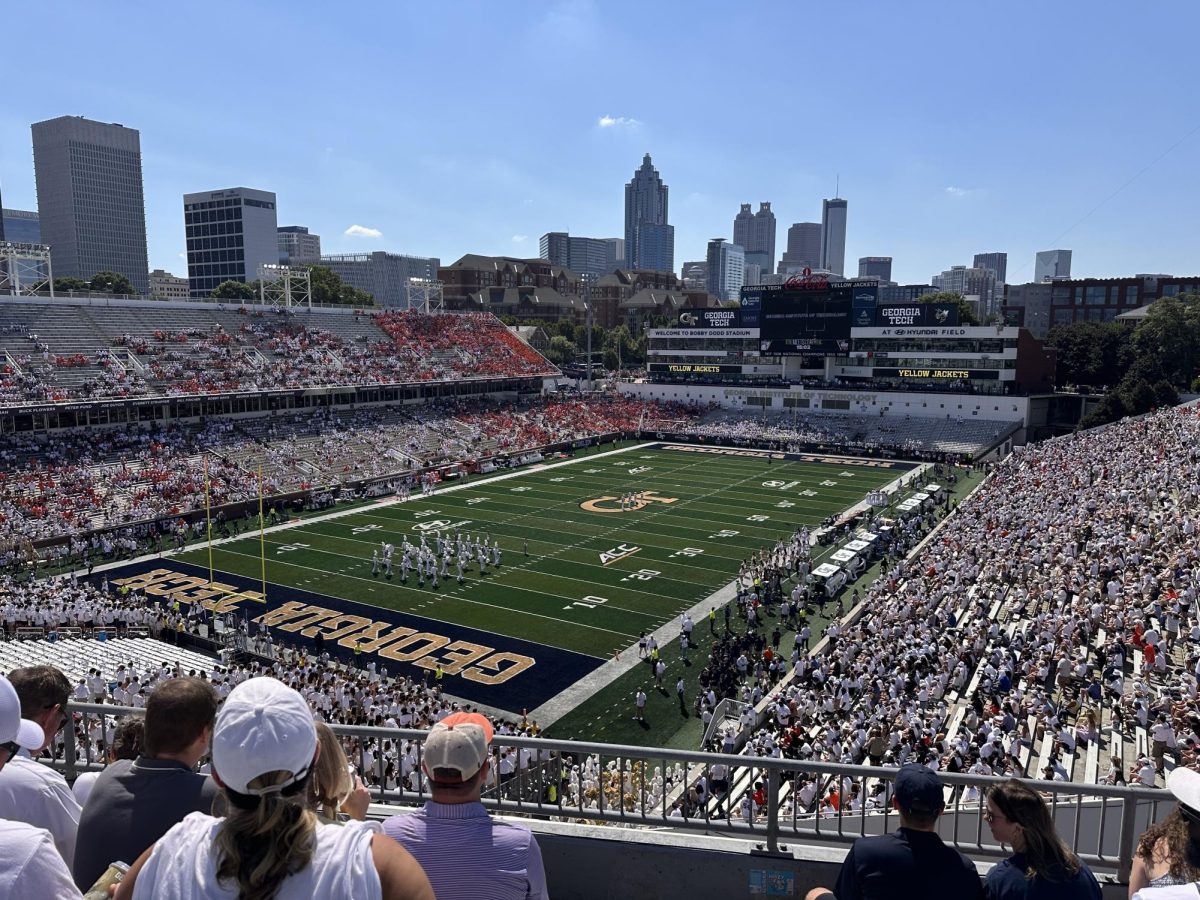Pride, Prejudice, and Pandemics
April 5, 2021
Sure, Jane Austen’s Pride and Prejudice might just be “a bunch of people going to each other’s houses,” but in a world where I can’t go to anyone’s house, that kind of escapism is something I’m really, really into right now.
For whatever reason, period dramas did wonders for my serotonin levels in March: Emma. Jane Eyre. Little Women. Sense and Sensibility. Bridgerton, to name a few. But it was Pride and Prejudice, with its quintessential enemies-to-lovers premise, that had me using words like ‘ardently’ and ‘countenance’ for absolutely no reason.
I watched a variety of Pride and Prejudice adaptations in the past few weeks. First, the 1995 BBC miniseries, which is widely heralded as the most authentic. And honestly—rightfully so. Part of its charm does come from the fact that Colin Firth deadpans straight into the camera for a good portion of every episode, but it’s endearing in its own right. The 2005 movie, meanwhile, with its gorgeous cinematography, score, and acting (Keira Knightley, I love youuuu) is a close second. And then there’s a musical, which is sort of average production-wise, but enjoyable nonetheless. Pride and Prejudice has, evidently, stood the test of time.
Austen, however, never experienced the vast popularity of her work. I doubt she envisioned that so many would resonate with the awkward and emotionally repressed Mr. Darcy, or invest themselves in his fondness for Elizabeth “Lizzie” Bennet. I doubt she knew how much delight Lizzie’s snarkiness, her unadulterated wit, would bring to so many readers all across the world. Or even how the outcast character Mary, who is really just there to be laughed at, makes a lasting impression with just several lines.
Still, Austen isn’t progressive by our standards, which explains the right-wing endorsements she garners in present day. Take Emma, for example: while modern interpretations show Emma Woodhouse’s development in the abandonment of her narcissism (and the realization that she should maybe just mind her own business), the original Emma also decides that it’s better to stick to her own social class, to cease befriending poorer people like Harriet. It’s cool that Lizzie is willful, headstrong, and determined to ensure her personal happiness, but she still plays largely within her existing social structure. George Wickham (who grooms young girls) is primarily vilified for libertine dishonesty and not ostensibly punished by the narrative: at least not without his final victim, Lydia, facing the brunt of it as well. Most recurringly, plots always seem to revolve around the whims of the one-percenters—the super-wealthy. And then, there’s the enduring focus on whiteness.
These are literary choices that reflect Austen’s time. The characters of Pride and Prejudice and in turn, their writer, inhabit a world of the past—a world of straw bonnets, dichotomous gender roles, and strict social hierarchies. A place where the marginalized were invisible and the instantaneity of the Information Age totally unfathomable. Imagine how precious music must have been without the luxury of streaming services. How rare and special a ball was! And while Pride and Prejudice unintentionally offers us a lens to the ugliness of the era, it also shows us that some aspects of human behavior are so intrinsic that they survive well into the future. To come to know the past, from authors of the past, is to empathize.
While it is constructive to look at Pride and Prejudice from a critical contemporary perspective, there’s a reason we can’t expect any more from Austen. Polish writer Karolina Zebrowska says it best: if you were a woman in England in the first half of the 19th Century, you likely weren’t aware of oppression in the same way we are now. You probably didn’t even consider yourself oppressed. And unless you were Kate Chopin, or as uncharacteristically enlightened as she, you definitely weren’t giving an overt monologue about modern feminism in your spare time like a character from Netflix’s Bridgerton. Political activism, in the meantime, was even more out of your reach if you were of the working class: you had mouths to feed, a reputation to cultivate, and your survival to fight for.
But it’s likely that you exerted power in your own way—perhaps you read abolitionist literature, or took over your father’s bakery after retirement. You may have dominated arguments in your household, or established any semblance of relative autonomy in the restrictive life laid out for you. Or, maybe, you wrote novels that would become international bestsellers centuries after your death. Either way, you fought for yourself.
Pride and Prejudice is forever a banger for its social realism. Although not untouched by manufactured social orders based on class, race, sex, it embodies a kind of authentic, inherent emotional harmony that demands adoration. Without fail, every character makes sense. They transcend novel, film, and century with such ease, such familiarity, that even the remote Regency-era England—so often reduced by the cold, calculated language of textbooks—feels very human.










